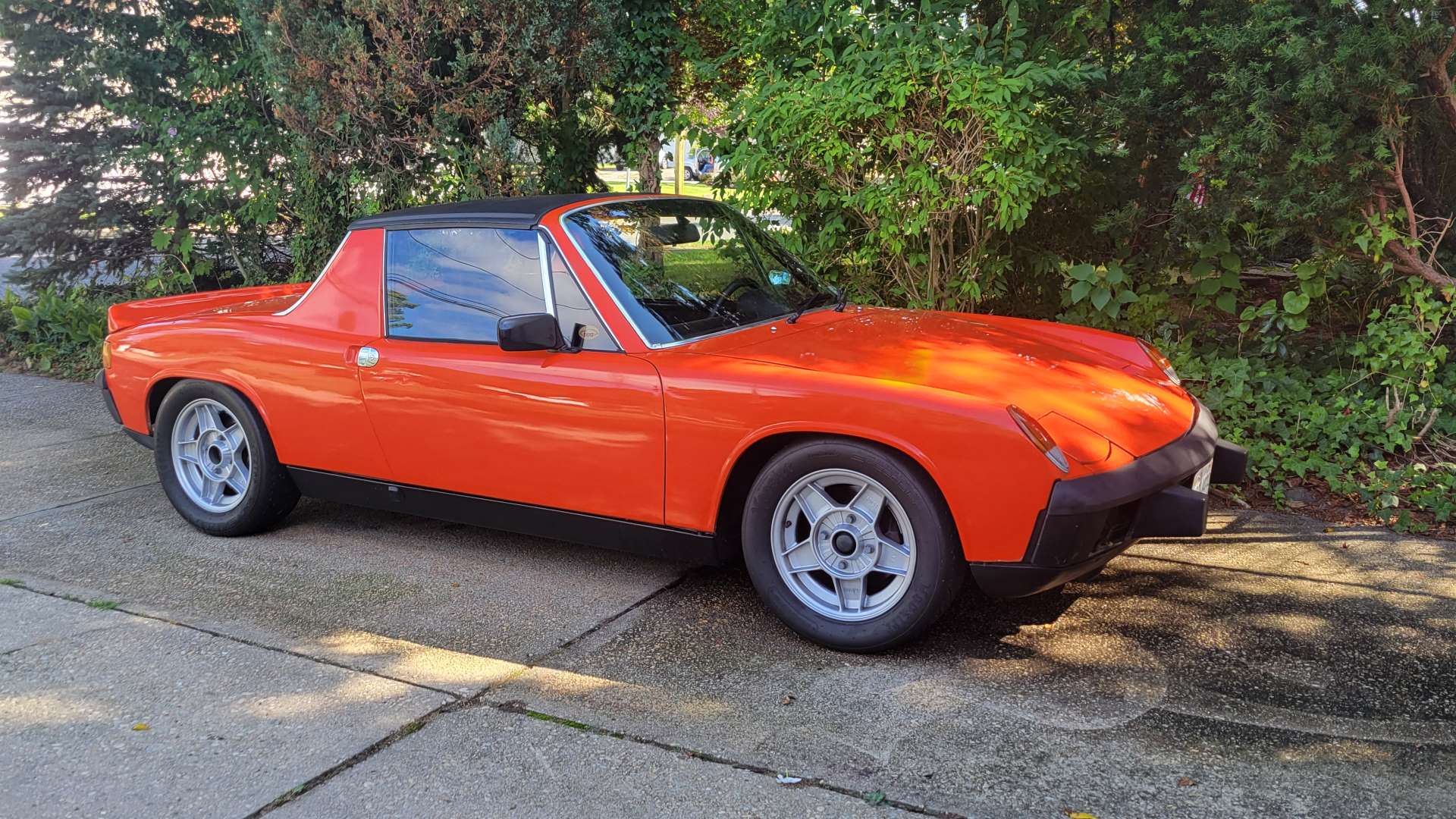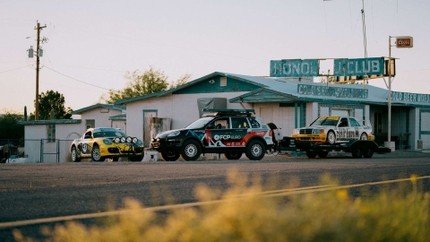- 05/20/2025
- 6 Min Read
- By: Christian Schaefer
Get Your Car Road Trip Ready - How to Save Hundreds During Your Next Adventure
The “American road trip” is a cultural phenomenon. People travel great distances in Europe and Asia, but certainly not with the frequency and ease we can manage in the US. With thousands of miles of interstate and millions of smaller regional roads, there are months' worth of nature, history, and sights to see across the country; you just have to be able to reach them all safely.
The ten to fifteen-minute trips you often take with your car don’t represent what it’s like to drive across the country. Knocking back mile after mile at highway speeds, interspersed with moments of gridlock traffic, puts your vehicle's major components through their most demanding paces. The last thing you need in those moments is for something to go wrong, but not everyone is so lucky. More often than not, the problem is something you didn’t know needed changing, only for it to wear beyond use and cause an issue. Before you head out on that big trip this year, peek at our guide below to see whether or not your vehicle is good to go.
Maintenance Prevents Breakdowns
Before heading out to wherever you’re off, you must consider the maintenance your vehicle needs. Each system within your vehicle, whether designed to make it go, stop, steer, or entertain, needs careful attention to its wear items. Failing to service the wear items on time can lead to excessive wear in certain places and a reduced response time in others; neither of those is what you want as a driver. Areas like the brakes, fluids, and belts are often overlooked parts, yet each can cause a significant pause in your trip. All it takes, at most, is a few bucks and a couple of hours of getting your hands dirty to prevent all that from happening.
A great place to start checking over is your brake system. As you should be aware, considering you’re operating a motor vehicle, the brakes are the main reason your car stops when you want it to. If any parts within its system are past their replacement interval, you must get them changed before spending a significant amount of time surrounded by other drivers.
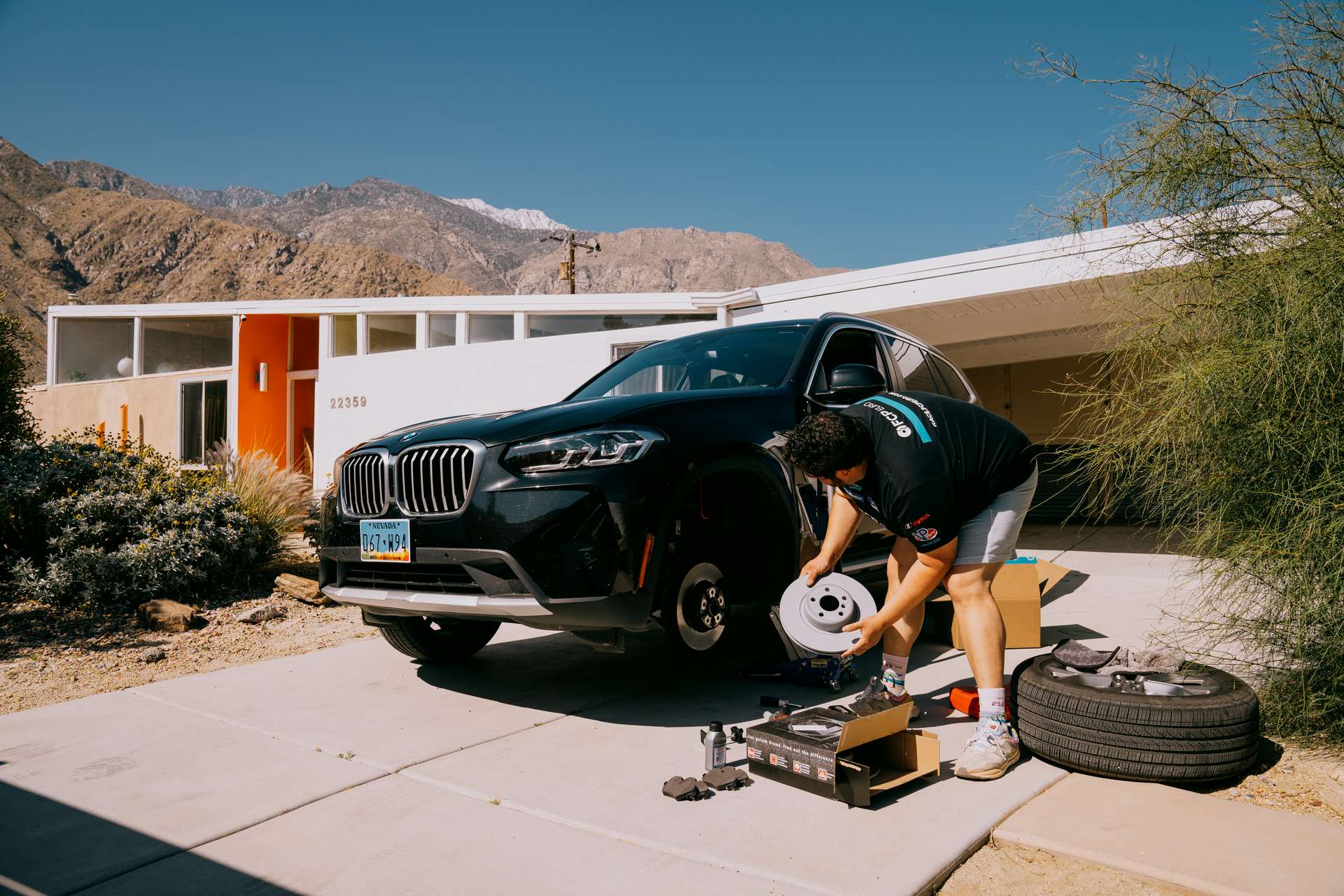
Start by heading to each corner of the car and peering through the wheels (if possible) to examine the rotors and pads. These are the physical parts that press against each other to slow wheel rotation, and their appearance says a lot about them. Check the rotors for deep grooves, discolored spots, and pitting; each is a sign of wear and should signal the need for replacement. However, you can also feel when a rotor is worn if the wheel shakes when you apply the brakes. The brake pads can be a bit trickier to see, so you may want to remove the wheel. Less than 4mm of pad material is the replacement marker to look out for, so don’t worry if you have more than that left.
Afterward, open the hood and examine your brake fluid reservoir. It’s typically a clear container with a black cap and yellow writing. First, ensure enough fluid in the reservoir, topping it up as needed. There should be markings on the exterior of the reservoir or a dipstick inside the cap. Then, take note of the fluid’s color. Fresh fluid will be a pale amber, so anything resembling beer or apple juice is too dark, signifying the fluid needs to be flushed. Worn fluid won't respond as well to your pedal input and can overheat much quicker, leaving you without a firm brake pedal.
While you’re under there, check out your accessory belts and other fluids.
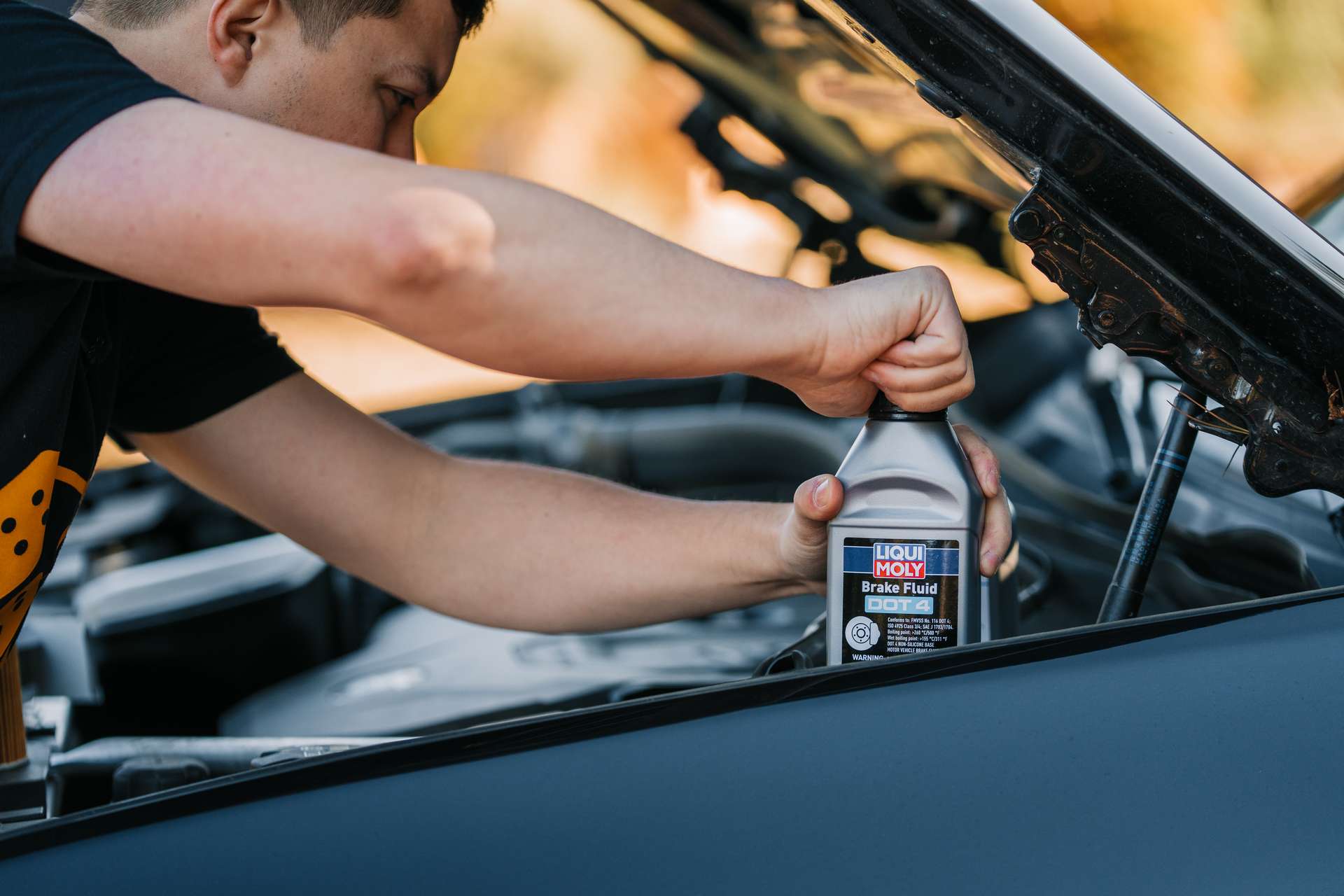
The former is one of the simplest parts in your car—nothing more than cord and rubber—yet so much rides on a healthy belt. What each belt drives depends on the engine, but beneficiaries include the water pump, alternator, A/C compressor, and power steering pump. Each of those accessories is critical, as losing one could mean an overheating engine or losing all electronics mid-drive. Instead, simply find the belt on the front of the engine—unless you own a Volvo with an SI6 engine—and see if the rubber outer layer is intact. Cracking rubber, excessively shiny rubber, and fraying cord indicate that a belt needs immediate replacement, so don’t drive too far with one. Once you get that belt off, spin the rollers on the tensioner and wherever else they may be; if they don’t spin silently, they need replacing. That’s often the case with belts, so kits containing them and the rollers are standard.
Checking your fluids is easier in some ways but not in others. As mentioned above, worn brake fluid becomes darker, and it does so reasonably drastically. Hydraulic clutch systems use the same fluid; expect it to discolor similarly. Engine coolant can be in a clear reservoir, but it doesn’t change from its pink, blue, or green color without outside contamination. Replacement intervals depend on the coolant formula, but in most cases, just ensure it’s topped up and not leaking anywhere—the same goes for power steering fluid. Engine oil is the only one that should be replaced multiple times a year, so it should be the freshest. Pull the dipstick and check both the level and the color. If it appears black, you should replace it sooner rather than later. Otherwise, top it off as needed.
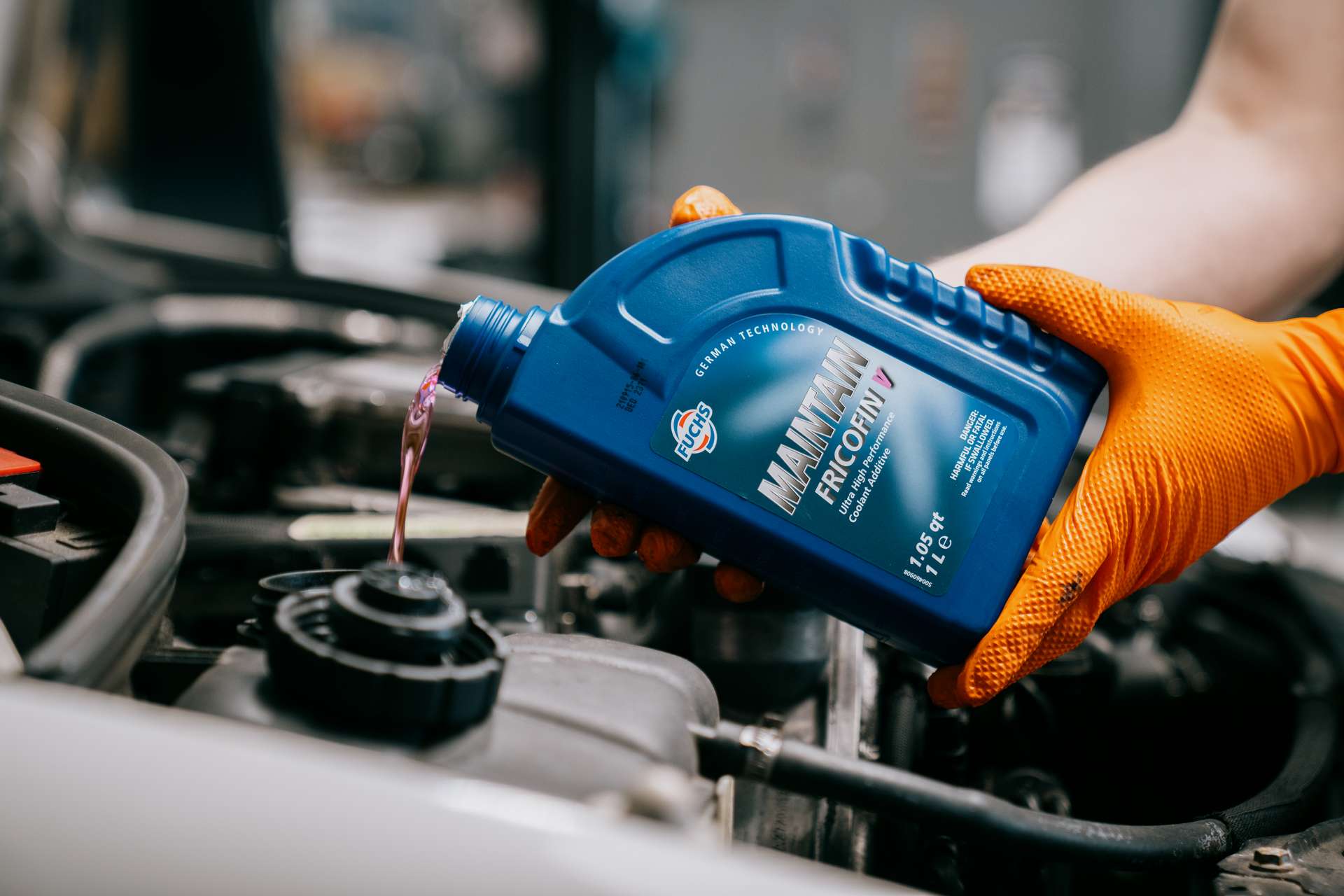
With those major mechanicals out of the way, consider the smaller factors that can heavily influence your car's performance on a long journey.
Preparation Makes Perfect
Do you realize just how essential your tires are? Those four rubber and steel donuts wrapped around your wheels are the only part of your car connected to the road. Their condition and composition affect everything related to driving, so knowing a few small things about what they look and feel like can put some dollars back in your wallet.
Key to your tire’s characteristics is its air pressure. The pressure within determines how squishy (that’s a technical term) the tire is, which directly relates to vehicle handling and response. The softer a tire, the more numb the steering feels. That softness also drastically increases roll resistance, forcing your car to work harder to drive you forward. Maximum driving performance isn’t necessarily what you’re looking for on a trip, but we’d bet that fuel economy is, and eliminating as much rolling resistance as safely possible will do wonders for consumption. A few PSI low on all four tires can cost you a few miles per gallon, adding up to a good bit of money over several hundred miles.
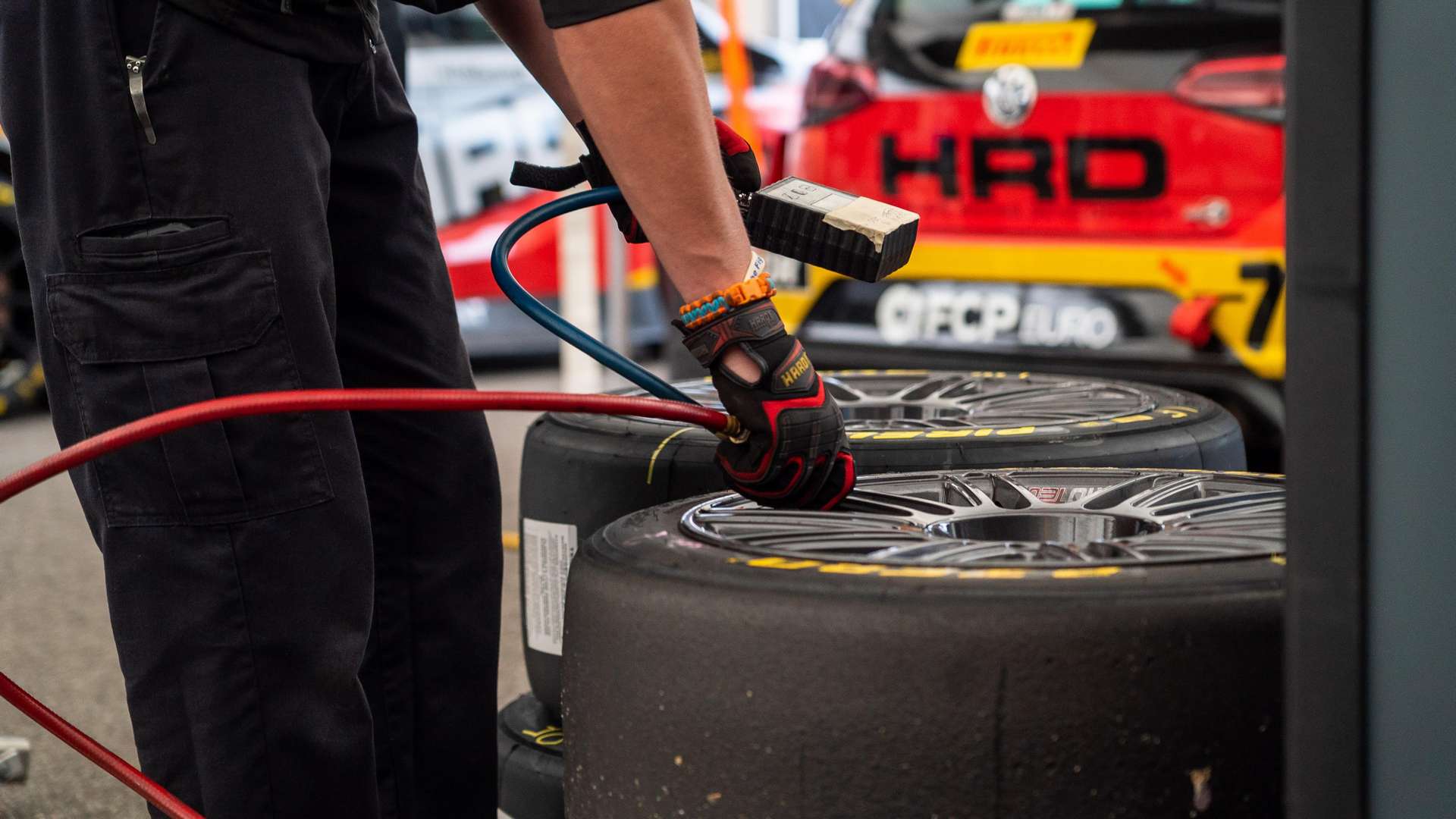
More than that, tire pressure will influence how the tread wears. In a perfect scenario, a tire’s tread will wear evenly, if not for a small amount more in the inner edge, for whatever amount of factory-set camber is present. Under-inflated rubber will wear on its outside edges the most, while over-inflation puts the strain on the center of the tire. Either way is less than desirable, so ensure your tires are pumped up within a couple of PSI of where they should be.
However, none of that matters if your tires are due for replacement.
Tire tread is what makes any tire a viable option for street driving, as the cuts, channels, and sipes evacuate water from under the tire, preventing hydroplaning. Too little tread means your tires are no longer effective at keeping you safe, especially in harsh weather, though an older, nearly bald tire will struggle to provide solid traction in the dry, too. We recommend a minimum tread depth of 4/32”, which can be measured with a tire depth gauge. If you don’t have one handy, grab the nearest penny and stick it into the shallowest part with Abe’s head pointing downward. If you can see the top of this head, your tread is too shallow for safe operation.
Must-Have Accessories For The Road
With the car cleaned and serviced, you can focus on the additions you may want to bring along to support the trip. Stuff happens while you’re out and about, so being prepared will never bite you. You’ll have to cover the snacks and drinks yourself, but we can help with the rest!
A dead battery is one of the worst situations you can come back to find. Sure, it can be remedied with the help of a passerby, but not without jumper cables. Jumpers are compact and stow easily under most trunk floors, so they shouldn’t take up much storage space, if any. You’re out of luck without another vehicle, though, and that’s where a portable jump pack comes in. NOCO is our favorite supplier, and their packs are permanent residents in many FCP Euro employee trunks. Even the most basic NOCO jump pack offers up to 20 starts on a full charge, plus a built-in flashlight and USB ports to charge your phone.
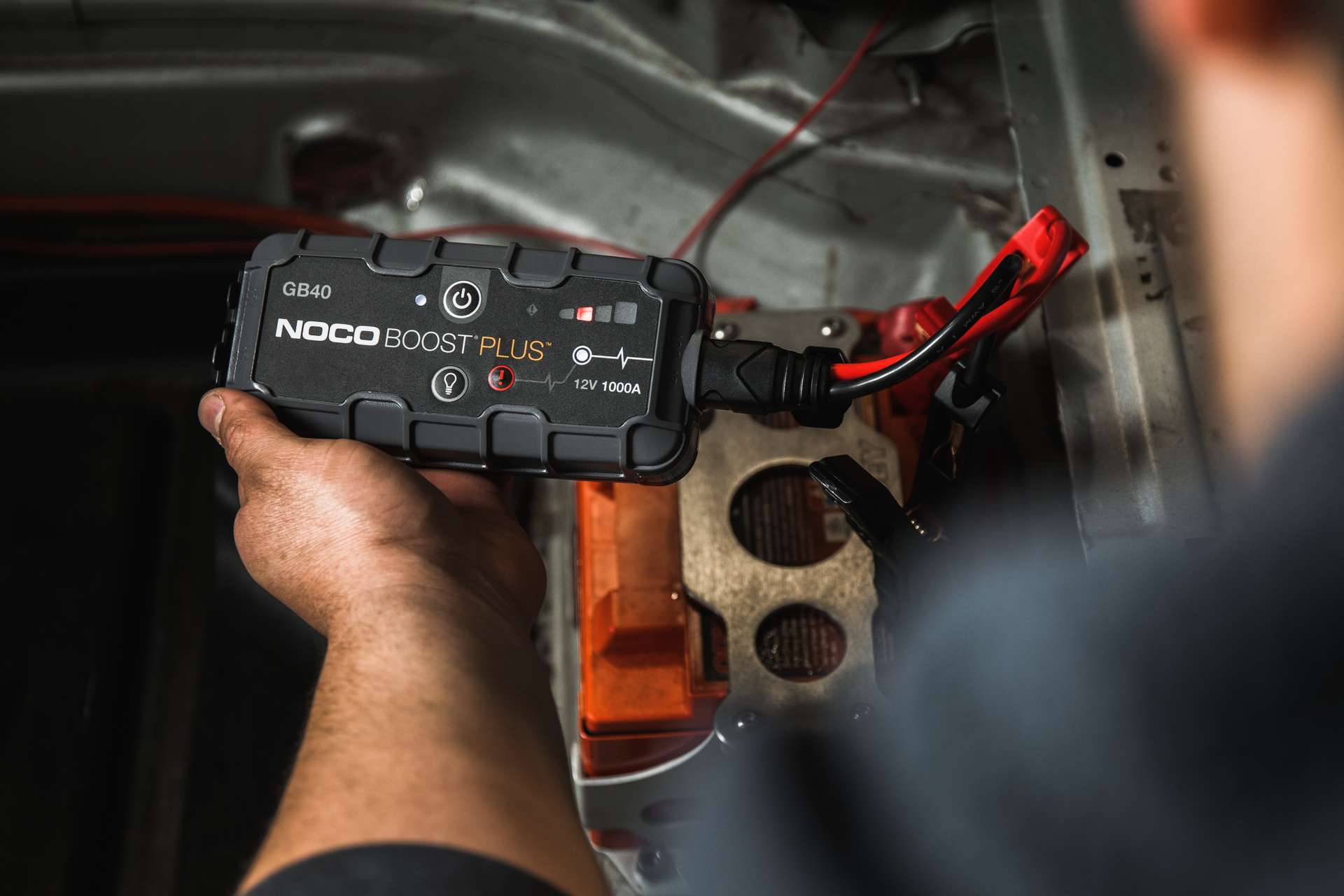
A tire plug kit is similarly helpful in a terrible situation. All sorts of cuts can cause a flat tire, and many deem it not salvageable, but something common, like a nail or screw puncture, should be repairable. The steel insert tools included in the kit are much easier to use than the partially plastic ones you’d find at your local auto parts store; plus, with 40 pieces of the plugging compound, you’ll have a valuable kit for years to come. Unfortunately, that kit doesn’t include a way to pump up your tires, but did you think we’d offer that without a solution? This Antigravity tire inflator is the compact pump you need, using its electricity from your 12V power socket.
Or would you prefer if we just gave you a kit with all the essentials? Well, you’re in luck, as our catalog team has assembled several versions of the perfect roadside emergency kit. There are a handful of variants, with inclusions such as NOCO jump packs, diagnostic scan tools, make-specific fluids, gloves, zip ties, small tools, and more!
Detail Before You Drive
Cleaning your car can also be a great way to prepare for a trip. While traveling, your car will obviously get dirty, but starting with a clean vehicle will prevent the excessive build-up of brake dust, road grime, and bugs. In many cases, it can also help you track down a stubborn fluid leak.
With a clean engine bay, any signs of leaks can be quickly detected and topped off on the road before a larger repair or service is needed. SONAX Engine Cleaner is our go-to for degreasing an engine bay and removing accumulated oils. Simply shoot on and spray off for a recently cleaned engine, but get in there with a brush and agitate any built-up oils for the best results. You can leave it be from there, but hitting it with Griot’s Engine Bay Dressing will surely make it sparkle like new.
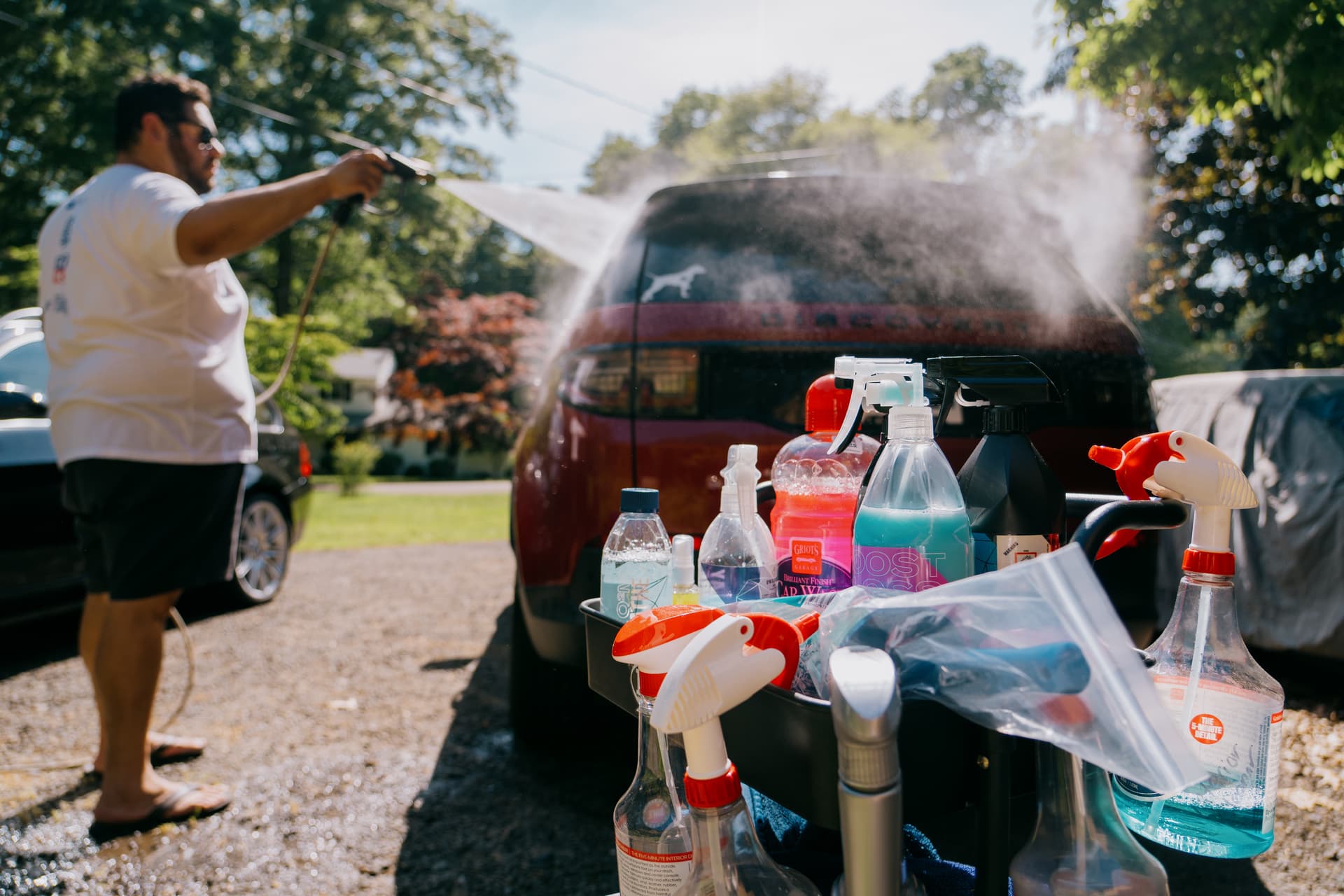
Cleaning the interior won’t necessarily save you money or improve your trip physically, but it might make you feel just a bit more ready to go. Gyeon’s interior cleaner is very effective across many surfaces and upholsteries, but they also offer an all-purpose cleaner that removes stains from seats and degreases an engine bay just as effectively. For something more complete, Griot’s Interior Detailing Kit features their interior cleaner, interior detailer, and a leather cleaner/protectant, along with a few microfiber towels and an applicator sponge.
Grabbing a set of all-weather floor mats from WeatherTech is a perfect way to protect all that hard interior detailing work while ensuring any mud and dirt are trapped in an easily washable mat. Many of the sets are laser-scanned to a specific floor pan and provide extensive coverage for the interior.
Have A Pre-Trip Checklist
There’s a lot going on when prepping for a road trip, and having tasks written out can be an easy way for you to ensure they’re not forgotten about. Below, you’ll find a simple one you can use to prep your vehicle. If you’d like to make a copy to print out, you can find that here!
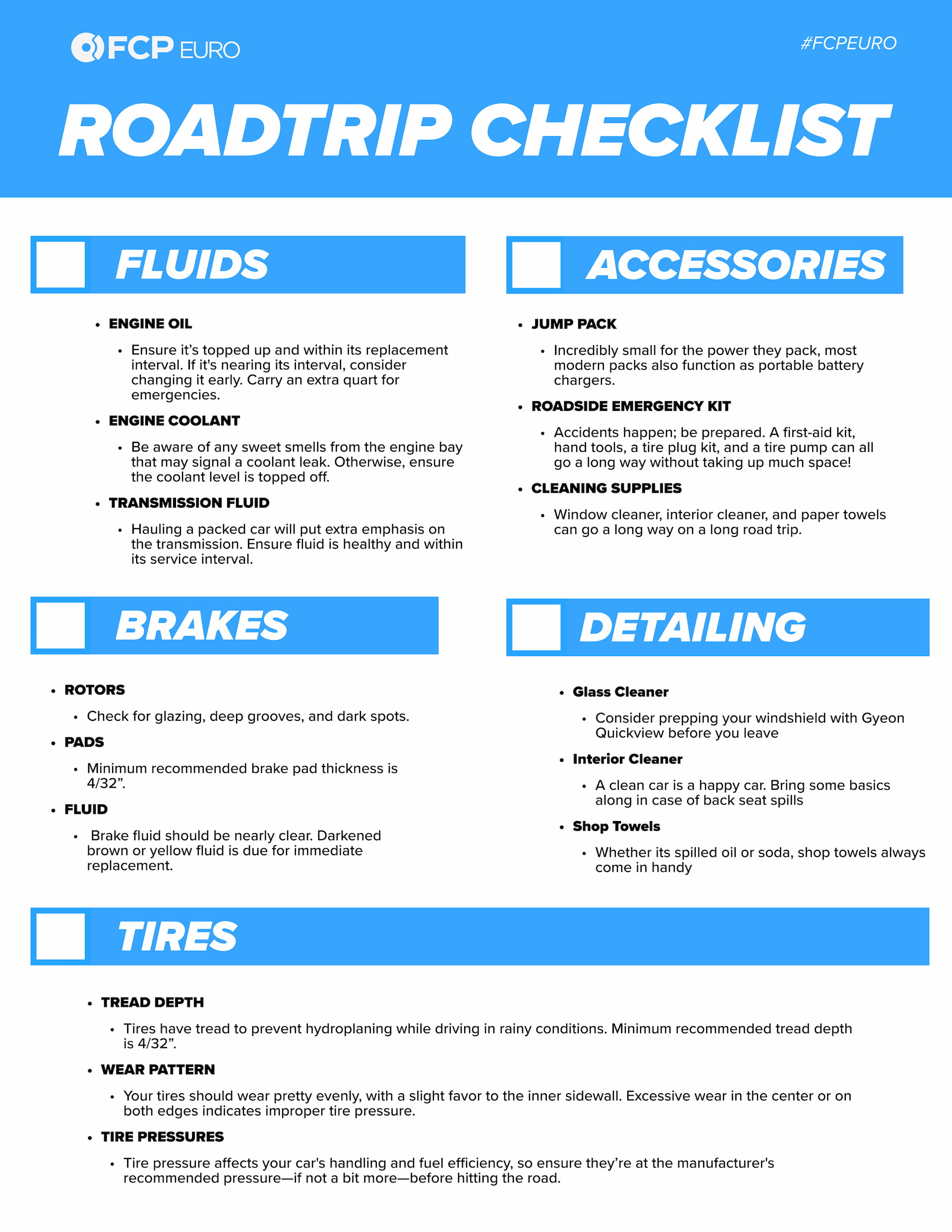
Hit The Road!
With those few checks made and services completed, you and your vehicle are ready for your next trip. But don’t forget the spares! Before heading out the door, hop over to our main site and grab yourself a quart of oil or coolant; you never know when you may need it. Safe travels!

